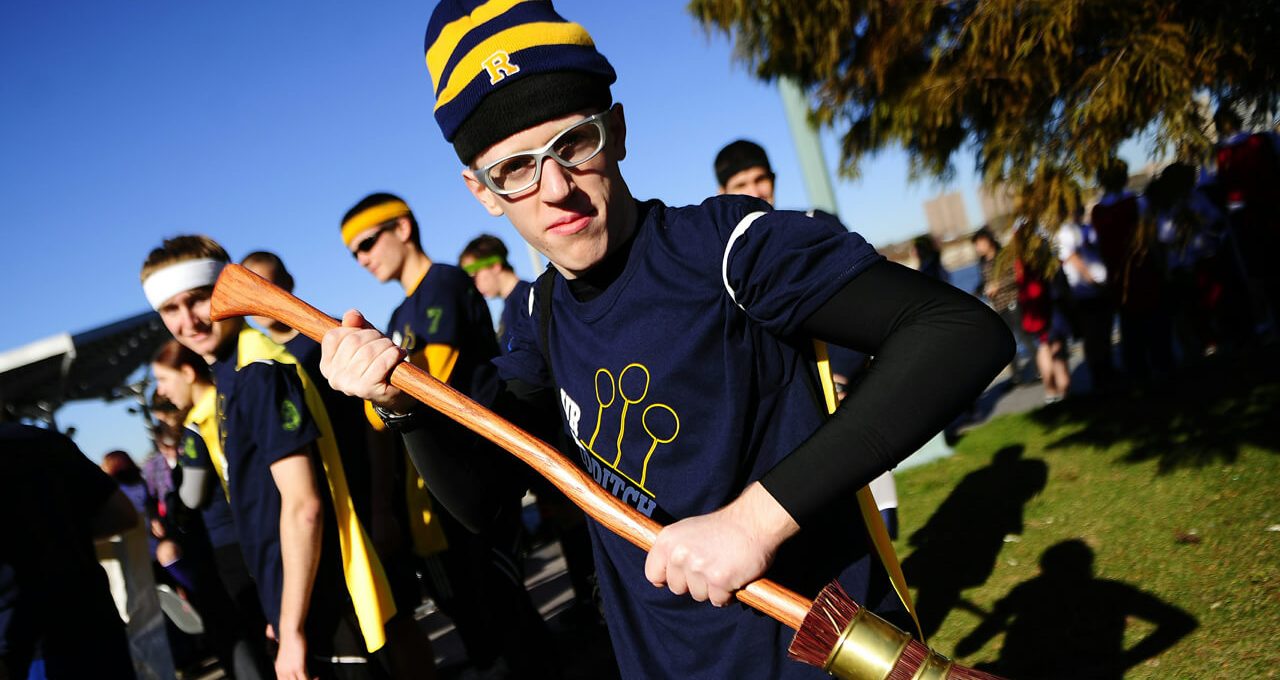The world is changing rapidly, and hobbies are changing with it. Here are the top 10 weirdest hobbies and unusual hobbies, which are gaining popularity in different countries. Some of them are many years old and are becoming more popular year after year, and some are very young.
10. Marbling (ebru)
One of the trendy hobbies looks even better than it sounds. Marbling is drawing with special paints on a smooth surface of water. The paints do not dissolve in water, and the drawing can then be transferred to a paper or fabric base.
9. Sneaky licks
The main goal of this entertainment, which teenagers have become “obsessed” with thanks to TikTok, was to steal a large and noticeable object from school and show it online, accompanied by the viral phrase “Devious Licks” (a slang meme).
Naturally, a few teens were caught red-handed, posting incriminating evidence against themselves. Eventually, TikTok simply banned videos related to theft. However, like any viral teen trend that sends parents into a panic, this craze will always recur in some form or another.
8. Red light, green light
We owe this hobby to the incredible popularity of the TV series "The Squid Game". It is mainly children of primary and secondary school age who are keen on it; they play a game in which they need to move when the green light "burns" and freeze when the red light "lights up". At the same time, they sing a song in Korean, imitating a doll from the series.
7. Chessboxing
Combining chess and boxing is a great option for hot-tempered people. Lose - knock out the opponent.
Of course, the knockout from insult is a joke, but the hybrid sport of chessboxing really does exist. And to qualify for participation in it at a professional level, athletes must have at least fifty amateur boxing matches, as well as have an ELO chess rating of at least 1600 (second category).
This game forces participants to constantly switch between physical and psychological combat. Chessboxing fights are officially held in different countries, including Russia, among adult participants and even among schoolchildren.
6. Alternate Reality Games
Mixing game content with the real world allows you to create the effect of a new, alternative reality (ARG). And one of the fundamental principles of such entertainment sounds rather strange - "this is not a game." For example, objects important to the plot must actually exist.
Arguably the first modern ARG is Ong's Hat, a fake conspiracy theory that has taken hold both online and offline. It's a fictional account of a real-life ghost town in New Jersey. The game's story involves occult rituals and interdimensional travel, prompting players to scour old texts and media reports to find out what really happened to the town's residents.
ARGs like these blur the line between fiction and fact and make the gaming experience especially interesting.
5. Biohacking
Modern biologists also like to have fun. But their entertainment goes much further than chess boxing and is connected with genetic and physiological research in home laboratories, most often set up in garages.
While many of these biologists are engaged in legitimate science, others focus on body hacking and implants, attempting to alter their bodies and go beyond human capabilities. In the most extreme cases, some biohacking masters actually attempt to fuse their bodies with electronics to begin their transformation into a cyborg.
By the way, it was thanks to biohackers who worked in collaboration with Medtronic that the first automatic insulin pump appeared – an artificial analogue of the pancreas.
4. Geocaching
This hobby emerged in the early 2000s and has only become more popular over the years. Geocaching began like this: someone would post GPS coordinates online and challenge others to find an item at those coordinates. This model of “digital treasure hunting” is still relevant today, but geocaching has spawned some strange variations.
- First, several caches were created as deliberate attempts to lure people into danger, including one cache placed in a minefield in Bagram, Afghanistan.
- Additionally, thousands of caches have been left in private and protected areas, such as national parks and wildlife refuges. Geocaching in such areas can be dangerous to the environment – or to the player. In 2011, 71-year-old Manuel Soria Heim was convicted of assaulting two people after shooting at geocachers who were searching for a cache on his property – just one of many such cases involving geocaching.
Despite all the dangers, the number of fans of this tourist game is growing day by day. After all, this is a great reason to visit unfamiliar places, feel the excitement of treasure hunting and the joy of communicating with like-minded people. And geocaching is one of the non-standard forms of training future surveyors.
3. Swamp football
This unusual form of football was probably invented by a very tough man with a lot of unnecessary clothes. Players compete on soft, muddy ground. This makes the sport more difficult and tiring, but its quirky nature and added challenges are what attract both athletes and spectators.
Instead of just watching people kicking a ball around a field for 90 minutes, spectators can watch teams (5 players each) struggle through sticky mud, fall over, lose boots and finally score a goal.
The sport originated in Finland, where it was apparently used as an exercise for athletes and soldiers. Try playing on marshy ground without a good level of physical fitness.
Although there is a competitive element to swamp football, even championship teams are usually made up of groups of friends who play for fun rather than with the desire to win trophies.
2. Quidditch
A real-life version of the wizarding sport from the Harry Potter series was created in 2005. And, just like in the books, Quidditch has received its share of media attention. And how could you not pay attention to a game in which participants hold brooms between their legs to simulate magical flight?
Quidditch quickly spread around the world and became a legitimate sport. Currently, 39 countries are members of the International Quidditch Association and participate in various ranking matches and even cups. There are European Cups and Asian Cups, and even a Quidditch World Cup.
The strangest thing is that the various Quidditch leagues pay their athletes, which has helped make Quidditch a real professional sport. It looks like there may be more gold in this game than in the Golden Snitch.
1. The Journey of a Toy
People who take up this hobby take pictures of their toy in front of various landmarks and also fill out travel journals on the ToyVoyagers website.
Some people give their toys to other travelers, or leave them where other travelers can pick them up. Each toy traveler has a tag with an identification number, which contains a link to the toy's blog (Travelog).
Do you have a toy that needs a vacation?














Оставить Комментарий